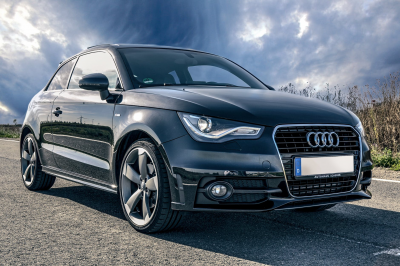
Don’t Buy a Used Car Without Doing These Things
A first car is often a used car, and many people find themselves buying used cars at various points in their lives too. A used car is not necessarily worse than a new car in any way, and it can save you a lot of money. In fact, when a car has had just one owner, it could be practically like new but a lot more affordable due to depreciation. You can buy a used car from a used car dealership or make a private purchase if you’re willing to take the risk. Before you buy a used car, there are some important steps that you should take.
Image from Pexels – Pexels License
Check the License Plate
The first thing that you might do when buying a used car is to check the license plate. You can do this before going to view a car or even before contacting the seller if you have the necessary information. Looking up the license plate with the DVLA can tell you about the vehicle tax, MOT, year of manufacture, emissions, and more. In some countries, checking the license plate can also tell you about information such as mileage. In the Netherlands, you can find out information about a vehicle’s odometer according Autoverleden’s database. A quick check can tell you plenty about the vehicle and its current status.
Do a Vehicle History Check
A vehicle history check can give you some more in-depth information about a used car that you’re considering purchasing. While you can get some of the information that you need from the DVLA, it can also be useful to pay for a vehicle history check once you’re getting more serious about buying a car. Various companies offer this service and it could cost you around £20 to have the check carried out. It can tell you about previous owners, imports and exports, and other important information.
Research the Value of the Vehicle
Another important thing to do is to make sure you’re not going to pay any more than you need to for a used car. It can be tricky to figure out how much you should be paying, but there are ways you can check the market value of a particular car. There are price guides that you can look at, which will give you an idea of how much a vehicle might be worth. You can also find similar cars online to find out how much they’re selling for. This will help you to understand if the asking price could be too high or perhaps even suspiciously low.
See the Car in Person
The next step is to take a look at the car in person. This will allow you to assess its condition and check some of the key elements to make sure it’s what you’re looking for. You don’t need to be an expert to look over the car and decide if it’s right for you. Start by choosing the right time to see it. During the day is best so that you can get a good view, and it’s even best to avoid rainy days so you can see clearly.
Look under the bonnet and under the car, checking for any signs of rust or any indications that the car has been in an accident. Take a look at the locks to see if any are different from the rest and look for signs of forced entry, which could be a sign that the car is stolen. Other things to look over include the tyres, the mileage and other parts of the car that could be damaged.
Image from Pexels – CC0 License
Get Information from the Seller
When speaking to the seller, make sure they give you as much information as possible. This includes asking them to show you the V5C registration document, which should be a red document. Ask to see the vehicle’s service history and past MOT documents, and ask any questions that you have about the vehicle. However, if you’re not willing to take the seller’s word for it, a vehicle history check is smart too.
Take a Test Drive
Test driving the vehicle will show you how the car handles and whether it’s the right choice for you. Before test driving someone else’s car, check that your insurance covers you to do so. You don’t want to have any problems and then find that you’re not insured. During your test drive, drive at different speeds and aim to test out different functions and features.
A used car can save you a lot of money and can still be reliable for years. Before you buy, make sure that you’re making a good purchase.
More from Blue School Of Motoring: